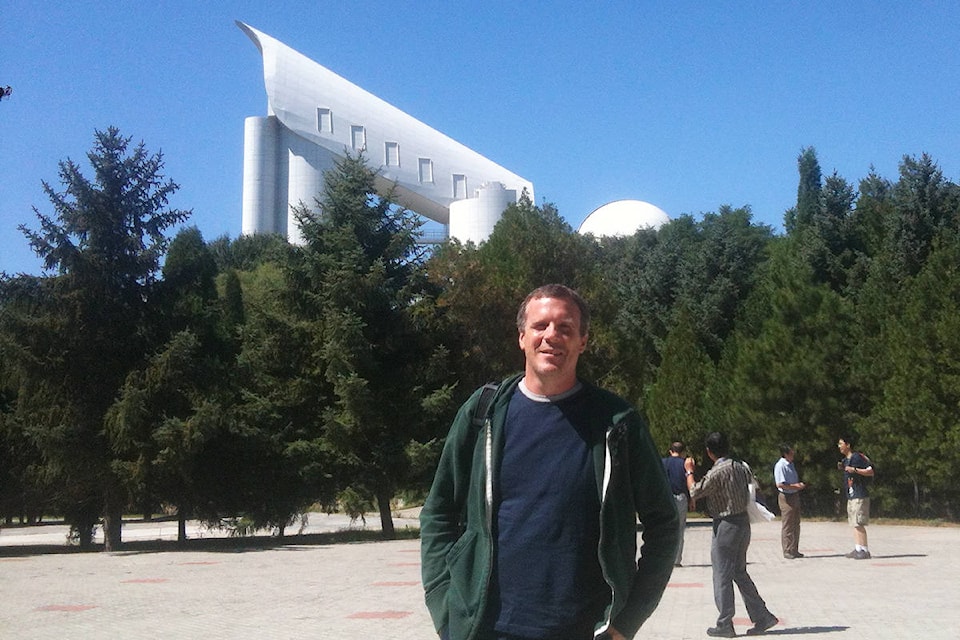Nanaimo Astronomy Society members are likely to feel a twinge of lens envy when they hear the guest speaker at this month’s society meeting.
Luc Simard, whose name is practically synonymous with the Thirty-Meter Telescope International Observatory project, will talk about the program at the meeting being hosted Thursday (May 25).
Simard, currently director of the Astronomy Technology Program at National Research Council Herzberg, was for 12 years the science instruments group leader for the TMT – a telescope far larger and more technologically advanced than anything previously devised.
The observatory won’t be completed until about 2026 and a final construction site in either Hawaii or the Canary Islands has yet to be selected, but the science, technological development and international partnerships supporting the program are well-established.
“When you say ‘Thirty-Meter Telescope,’ people want to hear about the science, which is great, the technology, which is awesome and then I always make sure I mention the people at the back end because there’s a wonderful human story to this project in my opinion, because we created a brand-new global partnership to get this done,” Simard said. “We have the United States, Canada, Japan and India in all this. Traditionally these people have not been working together and now they are.”
Technological advancement has been a keystone of the program. The telescope’s 30-metre primary mirror is actually comprised of 492 separate lenses. Computers will continually adjust each lens to compensate for such variables as changes in temperature, atmospheric density and gravitational sag of the array when the assembled telescope is moved to look at different portions of the sky.
The Narrow-Field Infrared Adaptive Optics System which corrects for atmospheric variation is a Canadian development.
The narrow-field infrared adaptive optics system which corrects for atmospheric variation is a Canadian development.
“I call it the heart of TMT … because what it does is it corrects the turbulence of the atmosphere as we were from space and it boosts the sensitivity of the telescope quite a bit so that you end up with a telescope that is about 200 times more sensitive than the biggest telescopes we have today,” Simard said.
That level of sensitivity, he said, will allow astronomers to not just see exoplanets in distant solar systems, but to actually analyze their atmospheric compositions to determine which planets might harbour life.
“So if you see an exoplanet with lots of oxygen then there’s a good chance you’ve got some kind of biology on the surface … We can also look to see if [it’s] covered by a rocky surface, gas, ocean or perhaps even a forest,” Simard said.
Simard started as an amateur astronomer and bought his first telescope when he was seven.
“My first telescope was, what, five centimetres in diameter,” he said. “So now it’s 30 metres.”
The meeting starts at 7 p.m. at Beban Park social centre. Admission is free to members; non-members can attend once for free, and are then encouraged to join.
photos@nanaimobulletin.com
